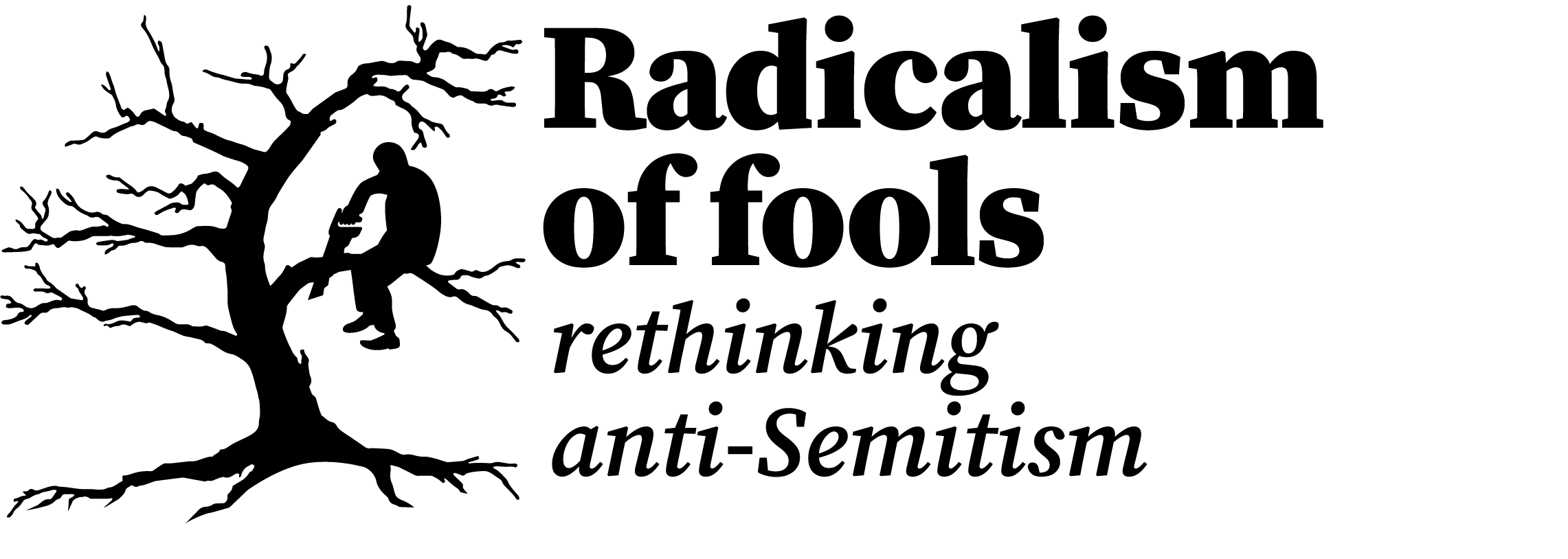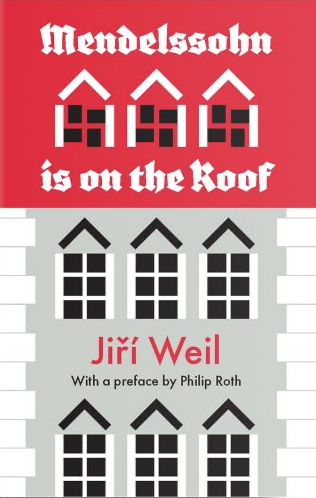Mendelssohn is on the Roof is a remarkable novel set against the backdrop of the Nazi occupation of Prague (1939–1945). Jiří Weil, its Jewish author, himself survived the war by escaping transportation to the death camps and faking his own death. He blends historical fact with fiction to illuminate the terror and moral disintegration faced by Prague’s population of Jews and non-Jews.
Real-life figures appear alongside fictional characters to portray the brutal machinery of Nazi rule. Among the former are Reinhard Heydrich, the Acting Reich Protector and architect of the ‘final solution’ and Karl Hermann Frank, a senior Nazi official. Weil’s narrative is rich in metaphor using statues, culture and nature to explore how the Nazis attempted to destroy the qualities that make us human.
The novel opens with a chillingly comic episode. Two Czech workmen are ordered to remove the “Jewish” statue of a renowned German composer, Felix Mendelssohn, from a concert hall roof. Unable to identify Mendelssohn, the Nazis rely on their belief in anti-Semitic pseudoscience to choose the statue with the largest nose. Only it turns out to be Richard Wagner, a composer revered by the Nazis. This moment of grotesque irony sets the tone for Weil’s critique of the Nazi occupation of Prague.
But the statue metaphor deepens beyond this initial farce. Weil imagines a conversation between Heydrich and Frank, where Heydrich invokes the statue of Roland, an epic Germanic hero, to justify German imperial rule. “Statues have always been the faithful shields and sentinels of this German city,” he says, equating Nazi occupation with a restoration of law and order. The metaphor becomes a chilling emblem of the Nazis’ self-image as righteous conquerors.
The statue metaphor recurs in the novel at unexpected moments, deepening its symbolic resonance. One striking instance is when Frank attends Mozart’s Don Giovanni, an opera steeped in allegory. In it, Don Giovanni, a defiant nobleman who refuses to repent, is ultimately dragged to hell by the statue of the man he murdered. By linking Frank’s cultural interests to this operatic narrative, Weil subtly suggests that, like Don Giovanni, the Nazis will face inevitable justice. This reckoning foreshadowed by the relentless advance of the Soviet army.
Weil demonstrates that the Nazis not only sought to destroy the Jewish people physically but also aimed to corrupt their essence. This theme is explored through the character of Dr Rabinovitch, whose struggle to remain an observant Jew is portrayed with poignant intensity. Throughout the novel, Rabinovitch is repeatedly forced into situations where he must violate core tenets of his faith. His plight the psychological and spiritual torment inflicted by the Nazis.
In one of the most poignant passages in the novel is Weil’s depiction of Rabinovitch being forced to stage a mock Seder. That is a ritual meal during the Jewish festival of Passover which commorates the liberation of Jews from slavery in ancient Egypt. Rabinovitch uses papier-mâché figures in a grotesque display for the Nazis’ so-called Jewish Museum. This moment encapsulates the murderous humiliation inflicted upon Prague’s Jews, turning a sacred ritual into a celebration of extermination.
This grotesque parody of the Seder underscores the cruel irony of Jewish life in the ghetto. Unlike Moses, who led the Israelites out of Egyptian bondage, there was no deliverer for the Jews of Prague under Nazi oppression. The Seder becomes a bitter emblem of captivity and desecration.
Weil offers a stark and unflinching portrayal of the Jewish collaborators. Alongside 11 other collaborators, Rabinovitch boards a train believing he is being transported to a “fortress town”, the Nazi concentration camp of Terezin (Theresienstadt in German). As the journey progresses, the grim reality begins to dawn on him, they are not headed for relative safety but direct to the death camps. Initially, Rabinovitch tries to distance himself from the others, clinging to the illusion that his cooperation might spare him and his family. But as the truth becomes undeniable, he is forced to confront the moral cost of his choices. Weil writes, “He had entertained visitors [Nazi officials] arriving from the murder’s main city… Now he must pay the price.”
Yet Weil offers a glimmer of forgiveness. “God would have mercy on him, for he had not sinned with any evil intent,” he says. This suggests that Rabinovitch’s moral failure under coercion may still be met with divine compassion.
This tension between guilt and grace is deepened by the presence of Otto Pokorny, a photographer first encountered offering food and coffee to Jan Krulis, who is hiding two young Jewish sisters, Adela and Greta, from the Nazis. Now a humble prisoner, Pokorny, the 13th man to join the train, is revealed to be one of the 36 Just Men (lamed vav tsadikim) of Talmudic tradition. As a righteous figure he acts with kindness, justice, and moral integrity, to help others quietly and selflessly. Here Weil suggests that redemption is not found in ritual observance or status but in acts of compassion, even in the darkest of times.
In the novel there are both Jewish and non-Jewish characters who act heroically in defiance of the Nazis. Among them is the condemned man who, on his way to the gallows, defiantly shouts “Stalingrad”, an invocation of the Nazi defeat at the hands of the Red Army in 1943. Then there is Richard Reisinger, a Jewish ghetto guard who redeems himself by sheltering fugitives and redirecting confiscated wood to people left in the ghetto. Through his action he transforms his role from enforcer to protector. The non-Jewish Czech workman, Antonín Bečvář, is saved from certain death during an Allied bombing thanks to a past act of kindness. He rescued an elderly woman whose Nazi son later ensures his safe return from the Reich. Weil’s humorous retelling of the event, linking his fate to a statue, adds a moment of levity to the novel’s generally grim tone.
However, the two most heroic characters in the novel are not the assassins of Heydrich in Operation Anthropoid. Nor are they those whose courageous acts challenge the Nazi regime in more visible ways. Instead, it is little girls, Adela and Greta, whose quiet bravery stands out in heartbreaking contrast. Forced to hide behind a cupboard, they ultimately dare to break for freedom, an act of pure courage in the face of terror. Their escape ends in tragedy, as they are captured and brutally murdered by the Gestapo.
Jiří Weil’s use of the forest metaphor to describe their deaths serves as a poignant counterpoint to the statue metaphor that recurs throughout the novel. While statues cold, immobile, and symbolic of Nazi power. the trees are described as “victorious and deathless,” embodying life, renewal, and resistance. “They were the life that overpowers death,” Weil writes. This suggests that even in the face of unimaginable cruelty human dignity endures. A fitting end to a great novel.
------------
Mendelssohn is on the Roof was first published in Czech in 1960. The first English translation was published in 1991. In 2011 it was reprinted by Daunt Books with an introduction by Philip Roth.

